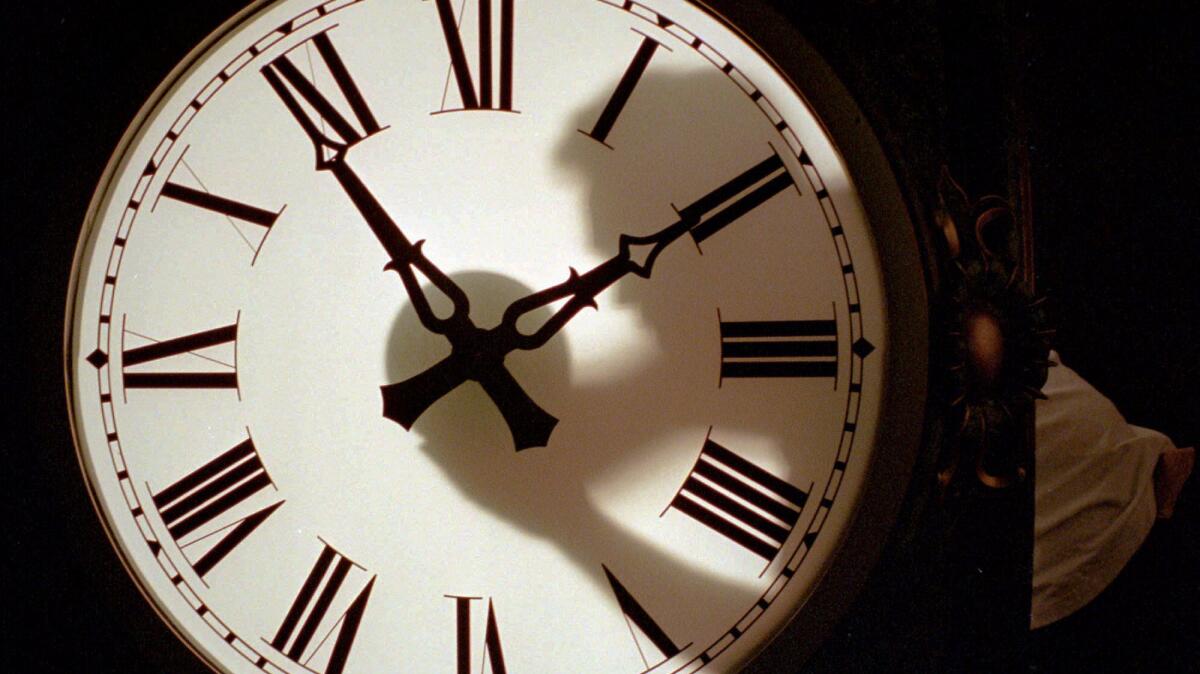Editorial: The madness of daylight saving time. And how not to fix it.

Twice a year most Americans do some minor time traveling – suddenly losing an hour in the spring, and then repeating the same hour twice in the fall.
Somehow we survive this biannual ritual of daylight saving time, though it throws off our circadian rhythms, causes confusion and missed appointments and provokes general discombobulation during the few days it takes to adjust. There’s even some suggestion that the disruption in our routine is bad for our health, maybe fatal.
Why, for Heaven’s sake, does this relic persist? Good question, one that Assemblyman Kansen Chu (D-San Jose) wants to put to California voters. His bill, AB 385, would put the clocking-changing business on a future ballot, asking whether it is time to go back to standard time permanently. The bill has passed the Assembly, key state Senate committees and is set to be heard in the Senate Appropriations Committee on Monday.
It’s a good idea to rethink this twice-a-year clock madness, but lawmakers should be wary of the confusion that would result from California’s decision to end a tradition observed by most of the U.S. The only continental U.S. state that does not currently recognize daylight saving time is Arizona. Better to start a national conversation about whether the practice still makes sense the 21st century than to find ourselves out-of-whack with other states in our time zone, such as Oregon and Nevada.
It’s a decision that has to be made by voters, since they adopted daylight saving by ballot in 1949. (Congress decided to let states choose to observe it, or not, after World War I.). Getting an extra hour of sunlight after work must have made sense to post-war Californians who were increasingly living in cities and working in factories or offices with schedules dictated by the numbers on a clock rather than the transit of the sun across the sky.
Supporters of the 1949 measure, Proposition 12, including business, churches and women’s organizations, believed there would be many benefits: a decrease in juvenile delinquency and traffic accidents, energy savings due to fewer lights being switched on in the evening, maybe even some water conservation (though how that might be accomplished was unclear.) Furthermore, they said, it would narrow the time differential for West Coast businesses seeking to communicate with their East Coast counterparts.
Farmers hated it, and so did Hollywood executives, who worried that people wouldn’t go to the movies as often in the summer evenings.
Those old arguments for and against aren’t particularly relevant in 2016. And many of the benefits promised never materialized, or were offset by unintended consequences of the change. It’s not as if we actually got an hour more of sunshine; it just came at a different time in our schedule. Also, observing daylight saving time might sync better with the rest of the country, but it puts California’s businesses out of whack with their Pacific Rim clients because most Asian countries do not change their clocks twice a year.
Is it time to give up daylight saving (or, as some apparently prefer, keep it year-round)? It may well be. Let’s have that discussion, but not state by state in a manner that might make time traveling even more perilous.
Follow the Opinion section on Twitter @latimesopinion and Facebook
MORE OPINION
In the search for better graduation rates, schools are fudging the numbers
Brexit’s lesson: Do not underestimate angry voters
The Supreme Court’s immigration decision is a tragedy that may be short-lived
More to Read
A cure for the common opinion
Get thought-provoking perspectives with our weekly newsletter.
You may occasionally receive promotional content from the Los Angeles Times.










